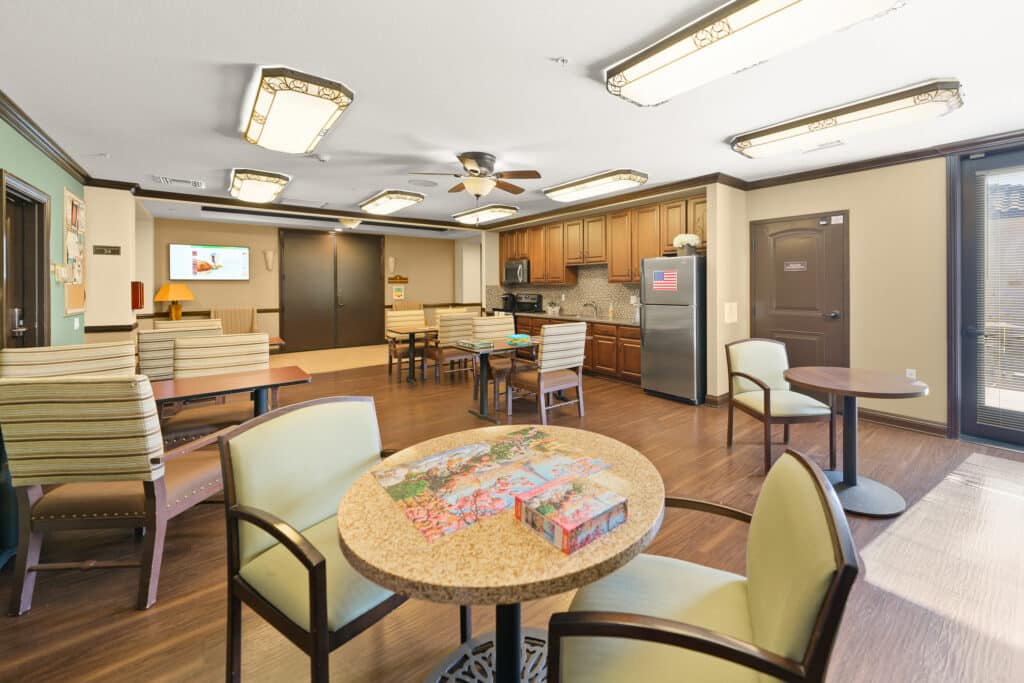Choosing the Right Home Care Assisted Living Facilities
As seniors and their families navigate the many care options available, understanding the role of home care and assisted living facilities becomes essential. These services blend the comfort of in-home support with the safety and structure of community living, providing a balanced approach to aging.
In this guide, we’ll explore the distinctions between in-home care vs assisted living costs, the pros and cons of home care vs assisted living, and how to identify the right fit based on needs and budget. Making an informed decision ensures that your loved one can age with dignity, comfort, and support.
Understanding the Spectrum of Senior Care
What is Assisted Living vs Nursing Home?
Before diving into costs and benefits, it’s vital to answer: what is assisted living vs nursing home care? Assisted living communities, like Westmont at San Miguel Ranch, support seniors who need help with daily tasks like dressing, bathing, or medication but don’t require around-the-clock medical care. In contrast, nursing homes are best suited for individuals with complex medical conditions who require 24-hour skilled nursing care.
Assisted living focuses on enhancing lifestyle through amenities and social engagement, while nursing homes emphasize healthcare management. Knowing this difference is key to aligning your expectations and resources with your loved one’s actual needs.
The Role of Home Care in Assisted Living
Benefits of Personalized Support
Home care assisted living facilities offer residents the opportunity to receive in-home assisted living near you style support while benefiting from a vibrant community. This means that seniors can access:
- Custom care plans tailored to their health and lifestyle.
- Flexibility to adjust care levels as needed.
- Comfort and privacy, reducing the need to move rooms or relocate.
Facilities like Westmont provide personalized attention and healthcare integration to ensure residents thrive while aging in place.
Cost Comparison: Home vs Facility
In-Home Care vs Assisted Living Costs
Cost is a central factor in the care decision. When evaluating in-home care vs assisted living costs, it’s crucial to consider both visible and hidden expenses.
| Care Option | Average Monthly Cost | Extra Fees |
| In-Home Care | $4,800+ | Caregiver transportation, hourly billing |
| Assisted Living | $3,500–$6,000 | Medication management, private rooms |
While in-home assisted living costs may seem flexible, expenses can quickly add up with hourly care and overnight assistance. On the other hand, assisted living includes housing, meals, and basic care, offering a more bundled and often more economical solution.
Explore tools like the AARP Long-Term Care Cost Calculator to evaluate local pricing scenarios.
Pros and Cons of Home Care vs Assisted Living
Weighing the Options
When choosing between home care, assisted living facilities, and staying fully at home, consider these pros and cons of home care vs assisted living:
Home Care Pros:
- Familiar environment
- Flexible schedules
- Personalized one-on-one attention
Home Care Cons:
- Higher cost for 24-hour care
- Risk of isolation
- Limited access to emergency care or social activities
Assisted Living Pros:
- Social community
- Built-in safety features
- Scheduled events and meals
Assisted Living Cons:
- Less personalized than private care
- May require relocation
- Less control over daily routine
This balanced view helps families choose a care path based on priorities, health conditions, and financial flexibility.

Social Life & Wellness
Community Engagement Opportunities
One of the major benefits of assisted living is structured social engagement. Regular activities such as art therapy, games, exercise, and outings combat loneliness and foster friendships. This emotional support is often hard to replicate with in-home care alone.
Studies show that seniors involved in community life have better cognitive health and fewer depressive symptoms. Facilities like Westmont are known for prioritizing vibrant social calendars to boost overall well-being. Check out these CDC insights on aging and social isolation for more information.
Customized Health Services
Personalized care is key in both home care and assisted living. Services such as physical therapy, medication management, and health monitoring can all be tailored. Communities with adaptable care levels help residents age gracefully without disruption.
Refer to this Resident Council Handbook for an idea of how services evolve within top-rated assisted living environments.
Planning Ahead: Evaluating Your Needs
Questions to Consider
- Are you managing chronic conditions?
- Is your home accessible and safe for aging in place?
- Do you prefer independence or a structured social life?
- Do you need round-the-clock care?
Assessing these questions can guide you toward either in-home assisted living near you services or full community living.
Flexibility for Changing Needs
What works today may not work tomorrow. Look for options that allow transitions between care levels—such as memory care or nursing services—within the same facility. This ensures peace of mind without the emotional toll of relocating again.
Real-Life Benefits of Blended Models
Some communities allow a hybrid approach—residents live in assisted living but bring in extra in-home care as needed. This maximizes comfort, autonomy, and safety while providing cost efficiency.
For example, Westmont at San Miguel Ranch allows residents to layer on services like physical therapy or personal aides without leaving the property. Explore more services offered at Lakeview Assisted Living.
Empowering Families to Make the Right Choice
Your Partner in Senior Living Excellence
Choosing between home care, assisted living facilities, private home care, or nursing homes is deeply personal, but you’re not alone. By understanding what assisted living vs nursing home is, analyzing the in-home care vs assisted living costs, and weighing the pros and cons of home care vs assisted living, you’ll be equipped to make a confident and compassionate decision.
Westmont at San Miguel Ranch offers the best of both worlds: independence and safety, connection and care. If you’re searching for in-home assisted living near you, this supportive community may be the perfect place to start.
📍 Westmont at San Miguel Ranch
2325 Proctor Valley Road, Chula Vista, CA 91914
📞 Call us at: 619-271-4385
🔗 Schedule a Tour or Learn More
Discover the level of care you or your family member requires. What Level of Care Do You Need?
Frequently Asked Questions
What is the difference between home care and assisted living?
Home care provides non-medical or medical support in a person’s own home, allowing seniors to maintain independence while receiving personalized care. Assisted living, on the other hand, is a residential community that offers housing, meals, daily assistance, and social activities for seniors who need help with daily tasks. Home care is ideal for those who prefer to age in place, while assisted living suits individuals needing more structured, round-the-clock support. The best choice depends on the individual’s health, mobility, and social needs.
What is the average cost of assisted living in CT?
The average cost of assisted living in Connecticut is around $5,000 to $6,500 per month, depending on location, services, and amenities. Luxury facilities or those offering memory care tend to be at the higher end of the spectrum. These costs typically include rent, meals, housekeeping, and assistance with activities of daily living. It’s important to compare communities and review what services are included in the pricing.
Does Medicare cover in-home assisted living?
Medicare does not cover the cost of assisted living, whether at home or in a facility, because it is considered a custodial service rather than medical care. However, Medicare may cover certain in-home health care services like skilled nursing, physical therapy, or medical equipment if prescribed by a doctor. Individuals may need to explore Medicaid, long-term care insurance, or private pay options for long-term support at home. Always check current Medicare guidelines for the most accurate information.
How much does it cost to have a caregiver come to your home?
Hiring a caregiver to come to your home typically costs between $25 to $35 per hour, depending on the caregiver’s qualifications and your location. If round-the-clock care is needed, the monthly cost can range from $5,000 to $10,000 or more. The total expense also depends on the level of care—basic companionship costs less than skilled nursing care. It’s wise to get estimates from multiple home care agencies to find a suitable match within your budget.








